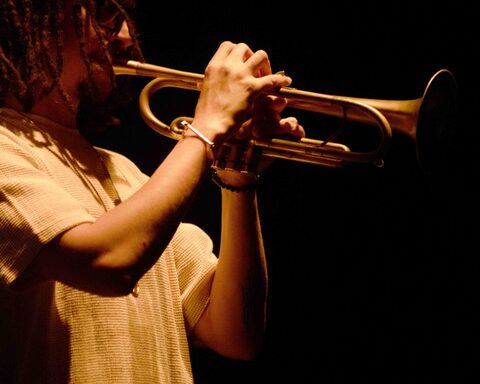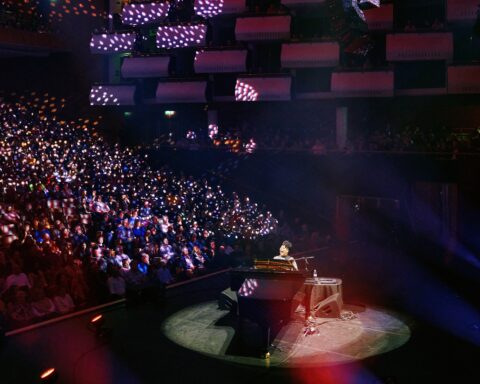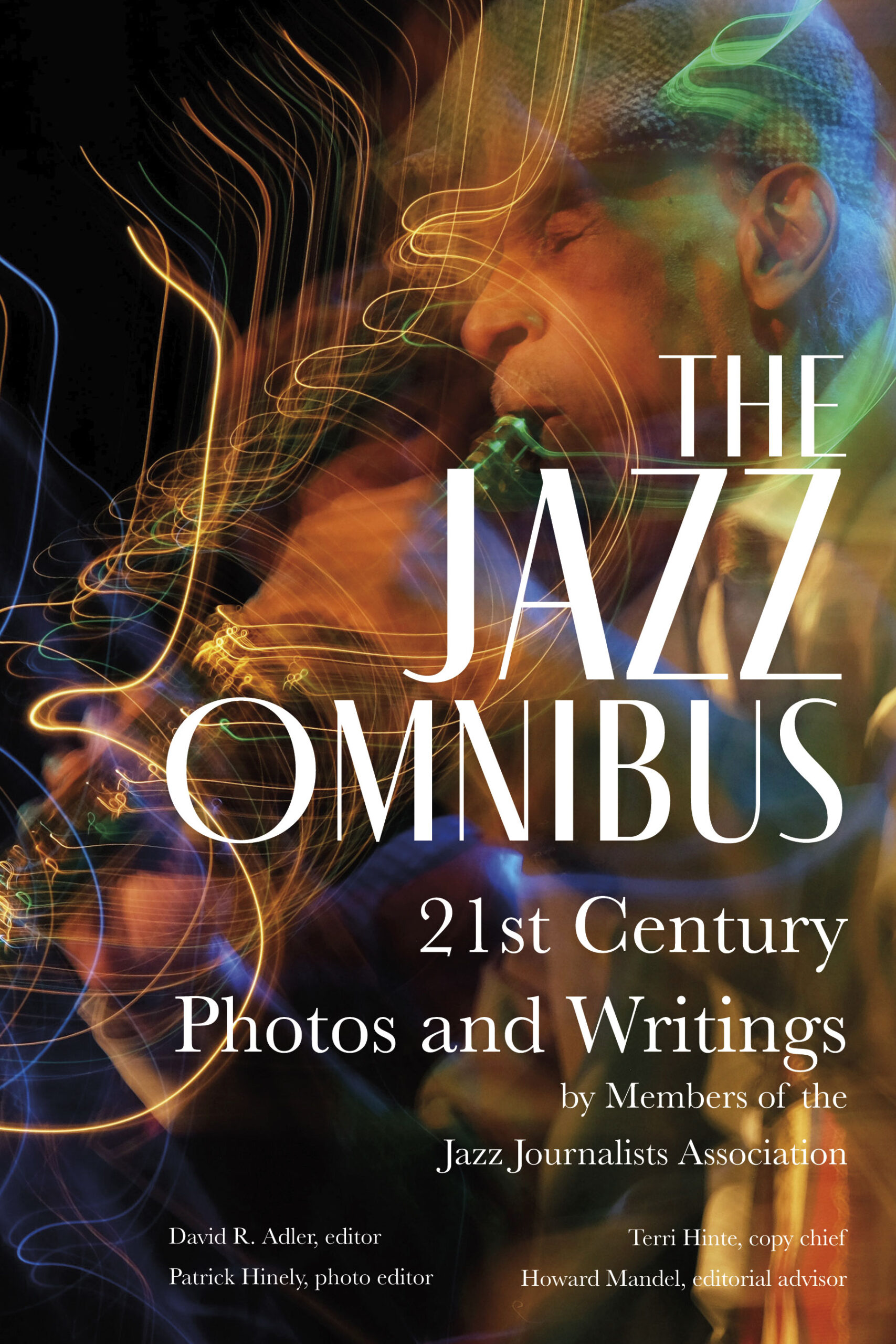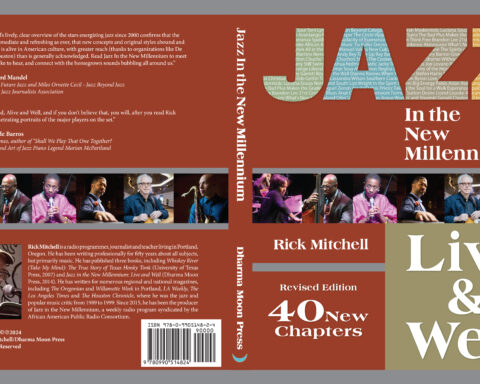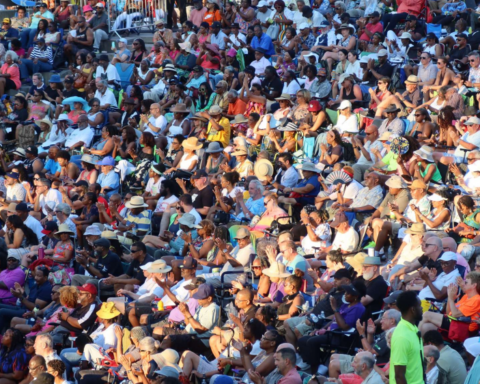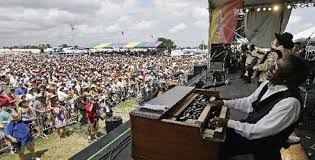
With the launch of the New Orleans Jazz & Heritage Festival last weekend (April 26, continuing through May 4), the summer jazz festival season has arrived. According to the May issue of DownBeat, there are 87 fests across the U.S. from May through mid-October that feature jazz (either primarily or in part.) And they provide jazz journalists with the best as well as most challenging of conditions.
Jazz fests are where you can hear much music, meet many artists, mingle with large audiences — all fodder for writing, photography, broadcasting and webcasting. Jazz fests can be powerful occasions of “audience building,” drawing attendees who may not otherwise encounter the music but come out of curiosity or convenience to hear unfamiliar acts, and might catch the bug. Festivals have become an enormous economic factor in the current jazz economy. They represent many opportunities for jazz journalists – to write advances or reviews, to collect experiences of music in performance and backstage, to meet artists and audiences, colleagues, publicists and presenters. But with all this going on, there’s nothing simple about covering a jazz festival.
JazzNews offers a few resources to help. If you don’t have DownBeat, see the list at APLACEFORJAZZ.ORG of American fests — it’s not comprehensive but represents the breadth of the field. Further research is advisable using Google, of course.
 Next: the JJA has archived two webinars about festival basics from a professional perspective: “Covering Jazz Festivals” and “Pro Photography at Jazz Festivals.”
Next: the JJA has archived two webinars about festival basics from a professional perspective: “Covering Jazz Festivals” and “Pro Photography at Jazz Festivals.”
In “Covering Jazz Festivals,” the late, great radio producer and show host Bobby Jackson of The Jazz Mind spoke of conducting interviews: “Whenever I do interviews, for the festival or not, I try to forecast down the road . . .certain important things that will happen or may have happened in the arc the artists career. It’s not easy to get a hold of these people, so while you have them think about how you can use them not only in the situation that’s right there in front of you in, but down the road. It’s basically maximizing the face time that you have with them.”
In “Pro Photography,” Detroit-based Karen Fox, New Orleans’ Scott Saltzman and upstate New York photog Richard Conde answered questions including “How do I sell my photographs?,” considered issues regarding innovation and the pulse of social media, and some problems of concert photography that are on-going. Some are also new: recently a rock band cropped photographer Rohan Anderson’s watermark out of his out of his photo before posting it on Instagram and Facebook. Is there a recurrent problem of rights appropriation? Have you had problems with credits for your work online? Rights and access issues have come to the fore at festivals. Are you allowed only 10 minutes, or the first three songs, to take photos? Can you use video cameras or audio recorders to take notes? Or is such equipment confiscated?
Discussion of these and other issues might be had at the JJA’s members-only Facebook discussion page. If you can’t sign into it, “friend” JJA President Howard Mandel, and he will add you to the group.
Most jazz festivals are designed to be pleasant, all-ages, relatively economical and sometimes even free places to hear high quality live music. Have your business cards on you — you’re about to collect musical experiences onstage and off, in the company of not only players and fans but also colleagues, publicists and presenters. Get to know your festival – and make sure the festival knows you not only as an attendee but as a professional journalist who uses media to document and disseminate information aimed at spreading the joys — and news — of jazz.

